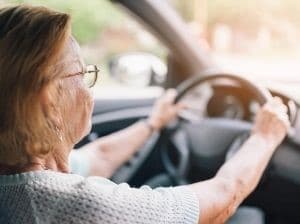Giving up driving can be a sensitive topic to discuss. Still, how do you know when it’s the right time? Here are a few signs to stop driving for older adults.

Whether you are deciding if you should give up driving or you are a loved one worried about your family member’s abilities, determining when driving should come to an end is difficult. Driving represents freedom, which can make it hard to willingly give up. While old age does not always represent poor driving, abilities can be diminished as we grow older, making driving unsafe for the driver and others on the road. Here are a few signs to stop driving for older adults.
Physical Restrictions
First and foremost, physical restrictions due to aging can be detrimental to driving capabilities. If you or your loved one shows signs of slower reflexes, deteriorating eyesight, or chronic pain, these are all signs to re-evaluate driving. Poor eyesight can create difficulty in seeing road signs and changing traffic conditions. Slower reflexes increase an accident’s risk, as reaction time to traffic patterns becomes slower. In addition, chronic pain can limit the range of motion needed to operate the pedals and steering wheel.
Cognitive Decline
Assessing cognitive decline can be difficult for anyone dealing with an older loved one. Look for signs of increased confusion while driving such as getting lost, mixing up the pedals, and difficulty understanding traffic signals or signs. Mental cognition is just as important as physical capabilities when driving. While they may be harder to spot, watching for these signs is imperative.
Difficulty Keeping Up
Staying safe on the road is not just about your own skills but keeping up with others around you. Having difficulty keeping up with the speed of traffic, changing road conditions, and staying in lanes are all signs to stop driving for older adults.
Accident History
If there has been an increase in accidents and close calls, this is a major sign that driving is unsafe. Increases in close calls, hitting curbs, or dings and scratches show an inability to safely operate a vehicle without causing harm.
If physical and cognitive abilities decline, as well as difficulty with keeping up in traffic or increased accidents, giving up driving may be the safest solution. If these problems have not impacted driving abilities yet, it is still important to reassess capabilities and brush up on senior safety tips often.